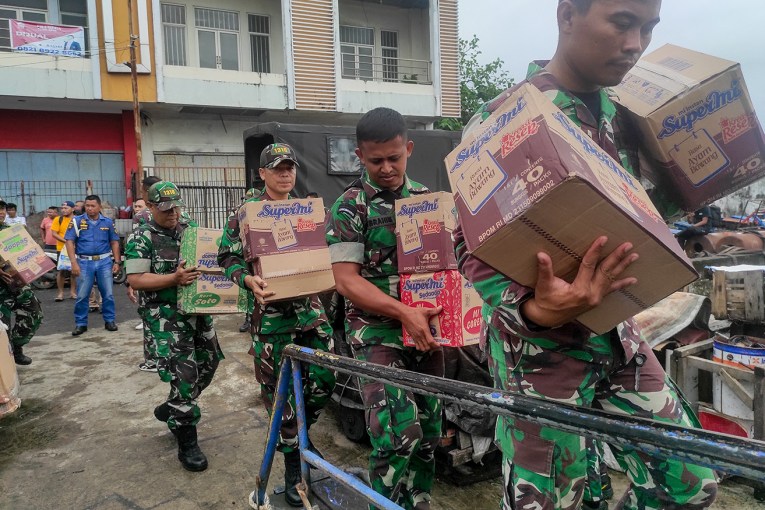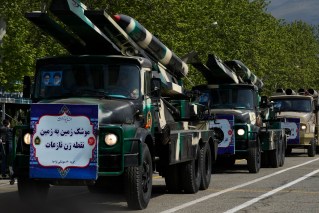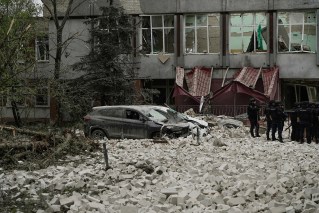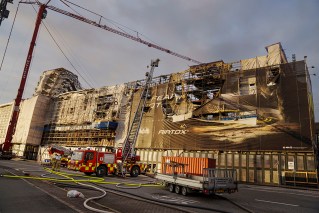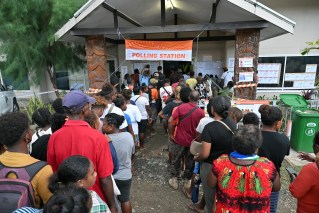Used toilet paper, fake cities in propaganda war

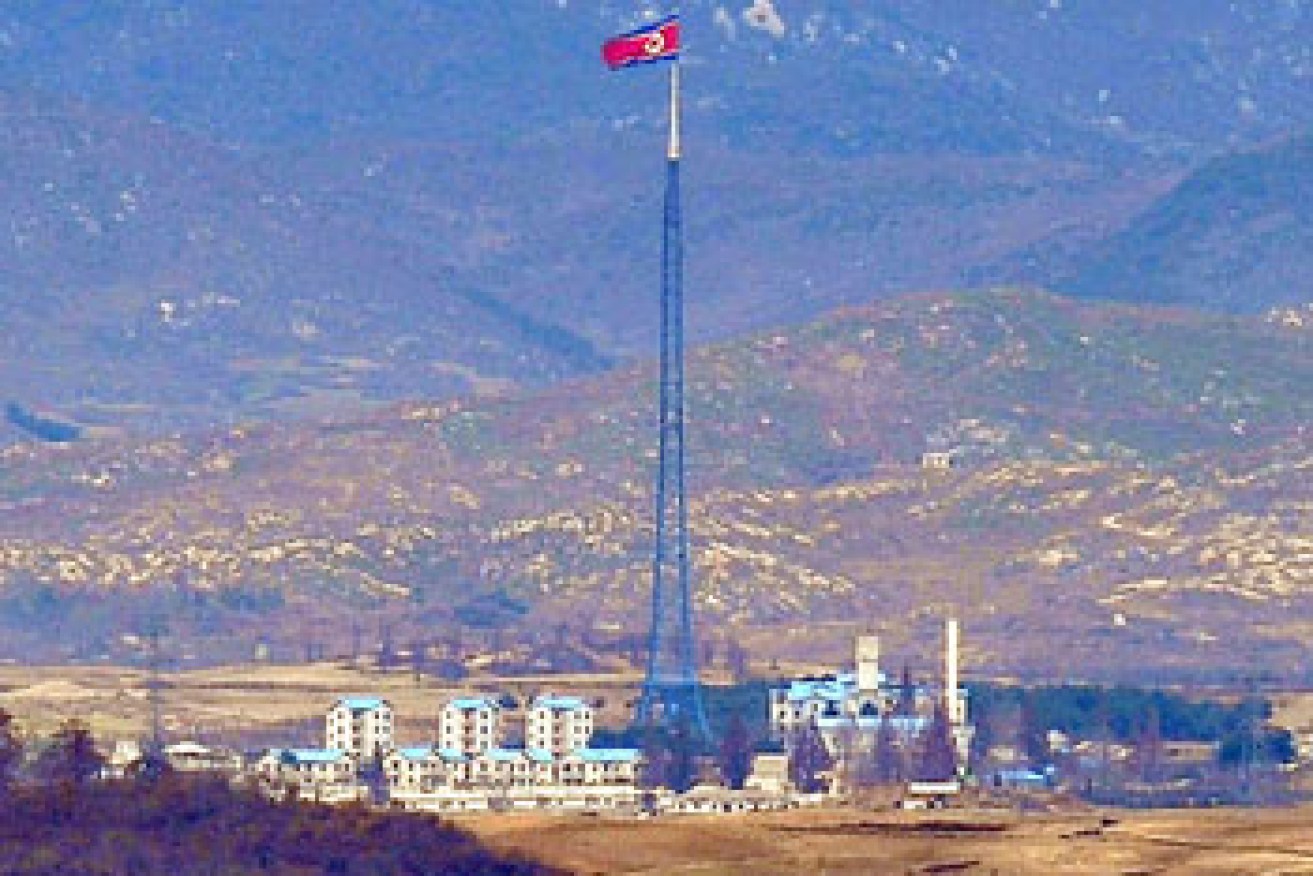
Getty
Bizarre cross-border propaganda tactics, including fake cities and pop music marathons, are continuing to colour the ongoing conflict between North and South Korea.
The strange behaviour belies the very real nuclear threat posed by North Korea, which announced an expansion of its testing regime on Friday.
In the past, Pyongyang claimed to have successfully tested powerful hydrogen bombs – although the legitimacy of these claims were doubted – which was followed on Sunday with reports in state-run media outlet DPRK Today declaring the rogue nation could devastate New York.
• NKorea fires short-range missiles
• North Korea claims to have ‘miniaturised’ warheads
• North Korea crisis could happen ‘within months’
“Our hydrogen bomb is much bigger than the one developed by the Soviet Union,” read the report, which cited a nuclear scientist named Cho Hyong Il.
“If this H-bomb were to be mounted on an inter-continental ballistic missile and fall on Manhattan in New York City, all the people there would be killed immediately and the city would burn down to ashes.”
Short-range ballistic missiles were tested as recently as Thursday: two were fired into the sea off the east coast city of Wonsan, flying approximately 500km.
But, as both sides have proved, there are more imaginative ways to antagonise your enemy than nuclear threats alone.
Building an uninhabited city of opulence and blasting propaganda messages and offensive pop music for hours every day were just some of the non-military tactics employed in the “ideological warfare”.
La Trobe University North Korea expert Benjamin Habib said the “inflammatory” techniques were a struggle for superiority on the Korean peninsula.
“All of these things take place in this battle to see which side is the legitimate government of all Korea,” he told The New Daily.

The South Korean military claim the propaganda that blasts out of their speakers can be heard from about 10km away during the day and 24km at night. Photo: Getty
The countries themselves are poles apart – in the past four decades the South has joined the international community and become one of the most prosperous economies in the world, while the North severed ties with the outside world.
The relationship between the two countries has been strained since they separated in the late 1940s, although both officially claim sovereignty over the entire peninsula.
Broadcast assault
Pyongyang’s claims of a successful hydrogen bomb test in January saw the South resume blasting propaganda, pop music, and news and weather reports over the border.
The North soon followed, broadcasting propaganda for up to 20 hours a day.
“The speakers also blast music in the form of Korea’s much-loved K-pop, which is banned in the North. Songs from Korean girl band Apink, singer IU and boy band Big Bang – including their mega hit Bang Bang Bang – are on the propagandists’ playlists,” the BBC reported in January, adding that the noise can be heard up to 24km away at night.

Gijungdong is known outside of North Korea as the ‘propaganda village’. Photo: Getty
“The North’s broadcasts are harder to hear – possibly the result of poor speakers – and carry its characteristically strident condemnations of Seoul and its allies … Pyongyang says it considers them an act of war and has threatened to blow up the speakers.”
The city built for ‘appearance’s sake’
Gijungdong, built in the heavily-guarded demilitarised zone between the North and South in the 1950s, seems like a fully-functioning town littered with multi-storey buildings, schools and even a hospital. About 200 people are claimed to live there.
But according to the South it was all a front: the buildings were uninhabited, the streets were bare and the only movement was on top of the 160m flagpole in the centre of town.
“City is probably a bit strong, it is the equivalent of a village of eight- or nine-storey apartments that are just a concrete shell and they are quite obviously not populated when you see them,” Dr Habib said.
“Almost everything that happens around [the demilitarised zone], it is all smoke and mirrors, but they have to keep it up for appearances sake.”
The village was believed to be an attempt to entice defectors from the South.
Balloon propaganda campaign
There was an additional surprise stuffed into balloons filled with government publicity in February – used toilet paper, garbage and cigarette butts.
It followed a back and forth between the two nations, after the North conducted its fourth nuclear test in a month in January. South Korea blasted pop songs and criticisms of North Korean leader Kim Jong-un in response, prompting the leaflets from the North.
As an added bonus, some of the balloons were timed to burst, scattering their undesirable parcels.
It wasn’t only the government that launched these campaigns, citizen groups were also “needling” the other side with propaganda leaflets.
At times, the North responded by shooting at South Korean soldiers on the border.
“The South Korean government doesn’t like it when citizen groups do this kind of thing, because often their timing is terrible and it just inflames things,” Dr Habib said.

